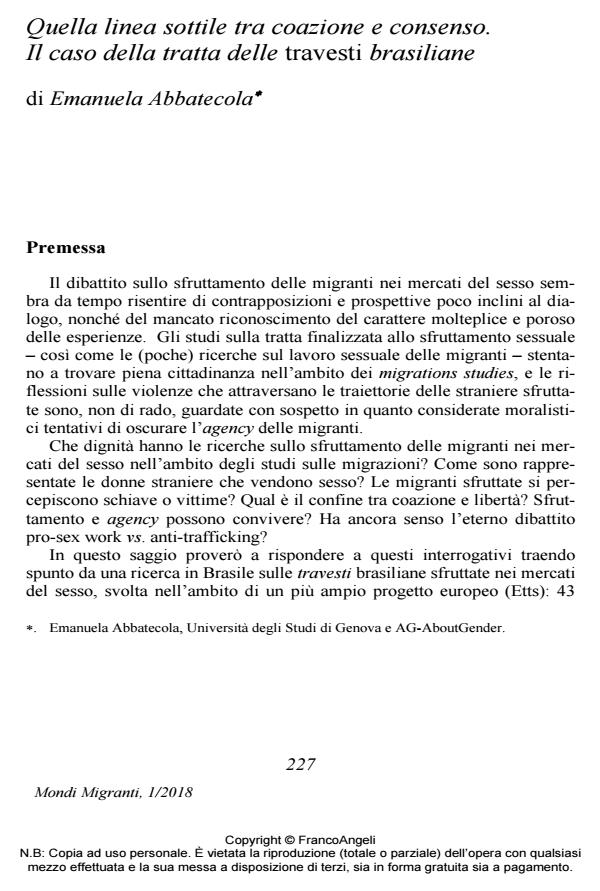That thin line between coercion and consensus. The case of brazilian travestis trafficking
Journal title MONDI MIGRANTI
Author/s Emanuela Abbatecola
Publishing Year 2018 Issue 2018/1
Language Italian Pages 28 P. 227-247 File size 230 KB
DOI 10.3280/MM2018-001011
DOI is like a bar code for intellectual property: to have more infomation
click here
Below, you can see the article first page
If you want to buy this article in PDF format, you can do it, following the instructions to buy download credits

FrancoAngeli is member of Publishers International Linking Association, Inc (PILA), a not-for-profit association which run the CrossRef service enabling links to and from online scholarly content.
The debate of migrants exploitation in the sex markets has long been affected by opposing positioning not very inclined to dialogue, as well as the lack of recognition of the multiple and porous nature of the experiences. The studies on sex trafficking - as well as the (few) researches on migrant sex work - find it hard to find full citizenship in migrations studies, and the reflections on the violence that exploited foreigners have to face are not infrequently looked with suspicion as considered moralistic attempts to obscure the agency of migrants. What dignity do the research on the involvement of foreign people in the sex markets have in the field of migration studies? How are foreign women who sell sex represented? Are migrants exploited in the sex markets perceived as slaves or migrants? What is the boundary between coercion and freedom? Can exploitation and agency coexist? Does the "eternal" debate prosex work vs. antitrafficking still make any sense? In this essay I will try to answer these questions, inspired by a research in Brazil, on Brazilian travestis exploited in the sex markets, carried out within the framework of a European project (Etts). The case of the travestis, very similar to the most well-known phenomenon of Nigerian trafficking and almost absent from the Italian debate, makes it possible to reflect on the porosity of the boundaries between coercion and consensus and the many ambivalences present in trafficking.
Keywords: Trafficking, exploitation, agency, migrants, brazilian travesti, gender violence.
Emanuela Abbatecola, Quella linea sottile tra coazione e consenso. Il caso della tratta delle travesti brasiliane in "MONDI MIGRANTI" 1/2018, pp 227-247, DOI: 10.3280/MM2018-001011